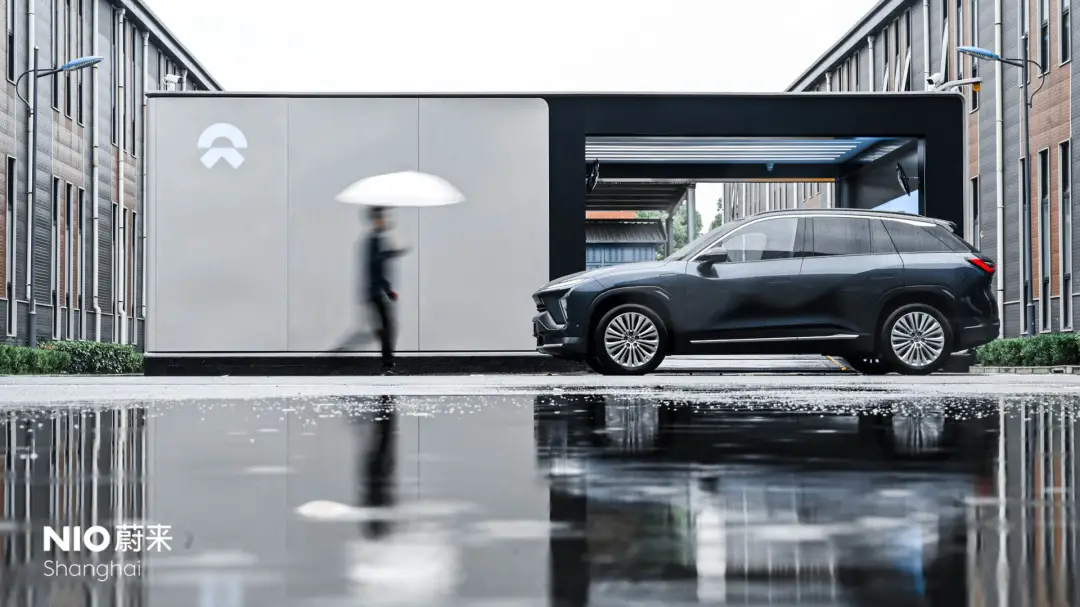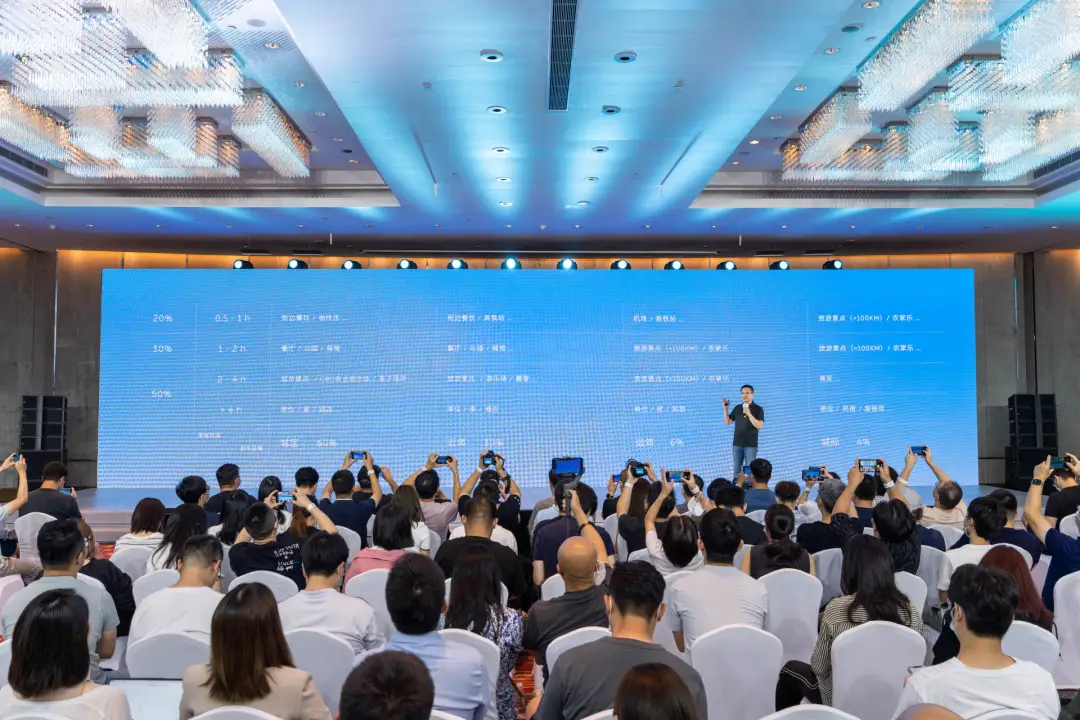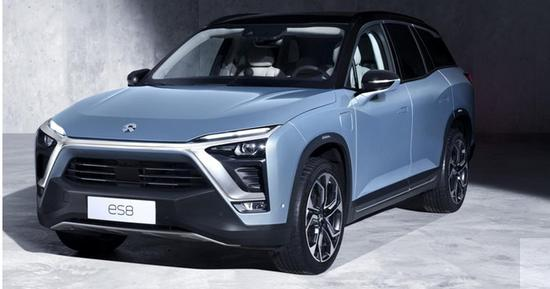Outing Bai Ren, a media subsidiary, focuses on the evolution of the automotive travel industry chain.
Author: Zheng Wen
In a year without new product launches, the improvement of the power system became the main theme of NIO.
On July 9th, NIO held its first NIO Power Day in Dishui Lake, Shanghai. NIO shared the development process and core technology of NIO Power, and released the NIO Power 2025 battery swapping station layout plan.
As of now, NIO has built more than 301 battery swapping stations, 204 supercharging stations, 1606 supercharging piles, and 382 destination charging stations nationwide, providing users with more than 2.9 million battery swapping services.
In the future, NIO will speed up the construction of its NIO Power charging and swapping network. The total number of battery swapping stations that NIO plans to build in 2021 has increased from 500 to over 700. From 2022 to 2025, NIO plans to add 600 new battery swapping stations per year to the Chinese market. By the end of 2025, the total number of NIO battery swapping stations worldwide will exceed 4,000, of which approximately 1,000 are outside of China.
“Only children make choices, adults make decisions.”
Outside of the Crown Holiday Hotel in Dishui Lake, a second-generation NIO battery swapping station has been built. This swapping station can accommodate more than 13 batteries, which is more than twice that of the first generation. At the same time, its daily service capacity has been expanded from 120 to 312 times.
What’s more important is that NIO’s second-generation battery swapping station does not require users to get out of their vehicles and wait for battery swapping. Instead, users can park their vehicles according to the instructions and swap batteries with just one click.
Next to the battery swapping station, there is a NIO mobile charging vehicle and several charging piles, which, along with the roadside service team, form NIO’s battery swapping system.
From the targets announced at the press conference, it is urgent to lay out battery swapping stations such as Dishui Lake across the country. Looking only at the short-term goals, there are still 400 charging station targets to be achieved in the next six months. It is worth noting that NIO’s current 300 battery swapping stations are the result of the past three years.
Three years ago, NIO’s founder and CEO, Li Bin, pledged to build 1,000 battery swapping stations. This goal has yet to be achieved. It seems that NIO will have to accelerate in the product gap period this year.The controversy over the best method for recharging electric vehicles, whether swapping batteries or recharging them, has never stopped. However, this is not a problem for NIO, whose primary goal as a customer-oriented enterprise is to provide users with a convenient way to recharge their vehicles. Its user-centric approach has resulted in a hybrid strategy that incorporates both battery swapping and recharging.
Over the past three years, NIO has invested tens of billions of yuan in its recharging infrastructure. However, according to Qin Lihong, co-founder and CEO of NIO, the proportion of investment in recharging infrastructure is decreasing steadily in relation to total investment, which means that even with heavy investment in fixed assets, NIO is becoming more agile and nimble as it grows.
“For NIO, the investment in NIO Power is like investing in a child’s education; it’s not a loss, it’s an investment. Fortunately, we’ve built NIO Power ourselves. Otherwise, if we had to purchase it externally, we would have to spend a lot more money today, and we wouldn’t have the freedom and standards that we need to provide our customers with the best experience. I still think we made the right strategic choice in this matter.”
This is similar to the decision made by Liu Qiangdong several years ago. At that time, Liu Qiangdong felt the disadvantages of the logistics industry, such as high costs and poor service quality, so in the face of much controversy, JD.com became one of the first e-commerce companies to build its own logistics system.
Whether self-built logistics systems are a drag or a benefit to JD.com’s competitiveness in the market is clear to us ordinary people. Shopping on Taobao, for example, has become a difficult experience when it comes to picking up deliveries. However, JD.com’s logistics efficiency and service quality remain stable.
In fact, NIO has already begun to demonstrate its advantage, as shown by NIO Power’s “rechargeable, replaceable, and upgradable” service. Many people overlook the upgrading aspect of this, but batteries are constantly improving, so if only new batteries are provided to new car owners to enhance their experience, existing users will be neglected. In the industry, it appears that only NIO is truly focused on batteries for the first car and every car thereafter.
Also worth noting is NIO’s announcement that it will open up NIO Power’s charging and battery swapping system and BaaS services to the entire industry, sharing NIO Power’s construction achievements with the industry and intelligent electric car users.However, there are limitations to the interchangeable battery system as the battery specifications and standards may not be consistent even among different vehicle models within the same automaker, let alone different automakers. Standardization within automakers can be resolved to some extent, but resolving the divergent interests within the entire industry chain, including between different automakers, still requires a lengthy process of negotiation and compromise.
“Electric vehicles should be able to go wherever gasoline vehicles can go”
Even before the founding of NIO, Li Bin, at the time the chairman of Yiche, conducted a survey in July 2014 when electric vehicles were not yet popularized among the public. The question was simple: What is the reason you do not consider buying an electric vehicle if you do not take into account the purchase cost?
As can be seen from the answers, almost half of the respondents considered charging problems, and a large portion of the remaining half considered expensive batteries. This clearly showed the pain points of electric vehicle popularization and laid the foundation for NIO’s persistent pursuit of improving the energy supplement system.
Now, seven years have passed, has the situation improved? The sales of new energy vehicles in China have increased from about 30,000 units in the first year to 1.14 million units last year.
During the same period, the number of charging piles grew from 3,000 in 2014 to over 400,000 last year, according to incomplete statistics. However, in a random interview with NIO, the anxieties from seven years ago still exist, and the situation does not seem to have improved.
During the press conference, Qin Lihong pointed out: “We believe that this problem has not been solved in the past seven years, and it may not be solved in the next seven years. This requires long-term investment and a change in public awareness. This is the background of the founding of NIO Power.”
This also means that the charging infrastructure is still a pain point.
According to the “Development Plan for Energy-saving and New Energy Vehicles Industry (2012-2020),” the cumulative production and sales of new energy vehicles in China will reach 5 million units by 2025.
However, according to the latest statistics from the traffic management bureau of the Ministry of Public Security, as of March 2021, the total number of new energy vehicles in the country has only reached 5.51 million units. Although the sales of new energy vehicles have been increasing, with 1.25 million units sold in 2020, there is still a long way to go to reach the target.
The construction of supporting infrastructure significantly affects the development of the new energy vehicle industry, and the government can no longer ignore it. A significant signal appeared in the “Government Work Report” during the 2020 two sessions, which expanded “building charging piles” to include “increasing charging piles, swapping stations, and other facilities” in the new infrastructure construction plan.
Electric vehicle (EV) charging stations, as an important component of new infrastructure, were written into the government work report for the first time. This seems to confirm the correctness of NIO’s diversified energy replenishment strategy.
In NIO’s analysis of user scenarios, it was found that 60% of users who use cars in urban areas, 30% are in suburban areas, 6% are in rural areas, and about 4% of users travel intercity. NIO Power’s mission is to list a variety of scenarios and to allow users to charge their cars effortlessly at the most convenient time or to charge their cars for the least amount of time.

Of course, NIO is still working hard.
When asked by the media how much NIO Power would be scored in the next three years, NIO Vice President Shen Fei replied that it would be 29 points, and “it will score 90 points when the coverage rate reaches 90%.” Qin Lihong even said sternly, “If we can’t get at least 29 points among all potential electric vehicle users in China, we won’t be able to pursue the business we want to pursue in the future.”
NIO also defines residential areas with electric vehicle charging stations within three kilometers and a charging time of about ten minutes as “electric area buildings”. At NIO Power Day, Shen Fei set a goal again and hoped that by 2025, 90% of NIO users’ homes could become “electric area buildings.”
At the end of the presentation, Qin Lihong emphasized that “EVs should be able to go wherever gasoline cars can go”. This goal is simple and grand, and it can only be achieved by industry-wide efforts. However, NIO undoubtedly set a good example from the perspective of the host factory.
This article is a translation by ChatGPT of a Chinese report from 42HOW. If you have any questions about it, please email bd@42how.com.
